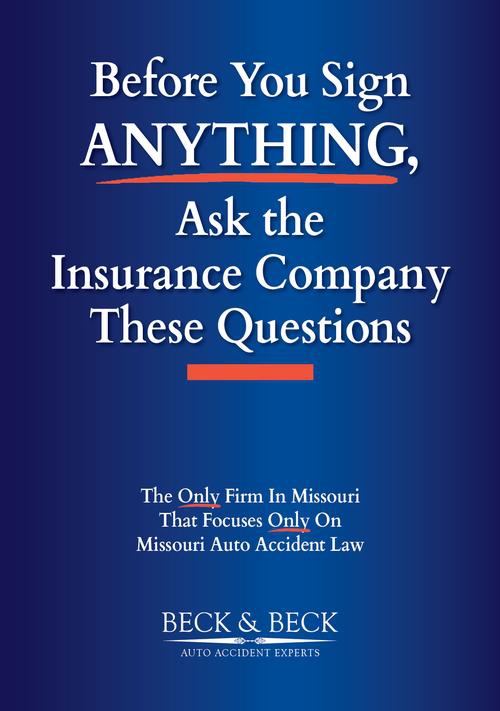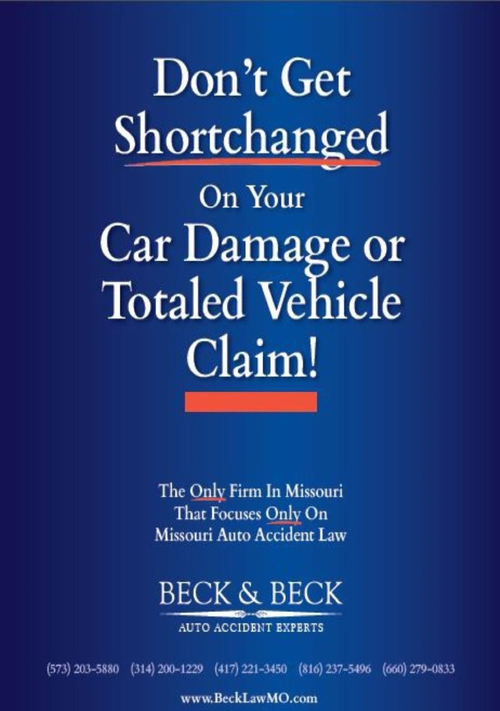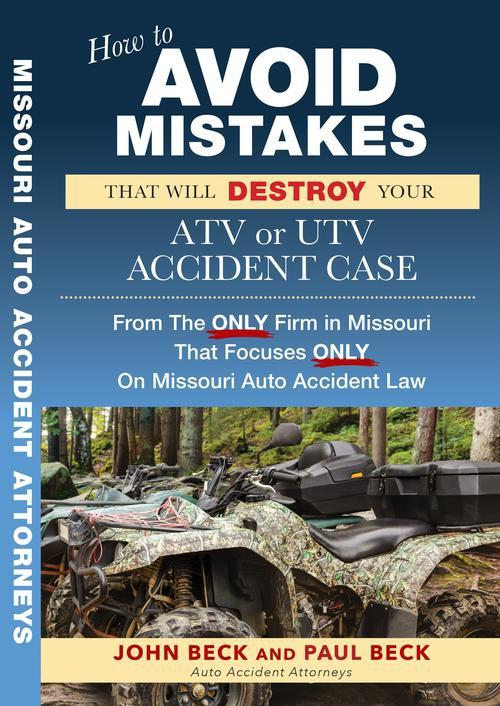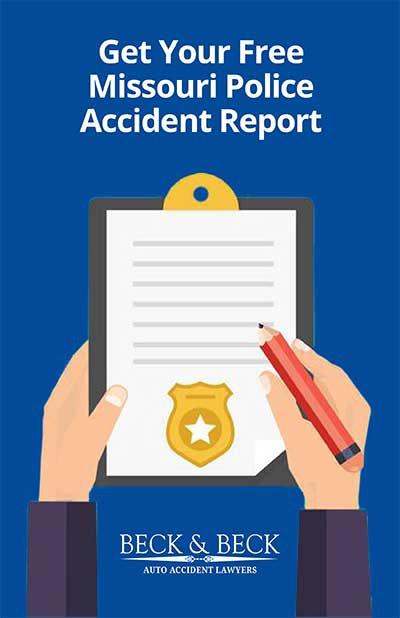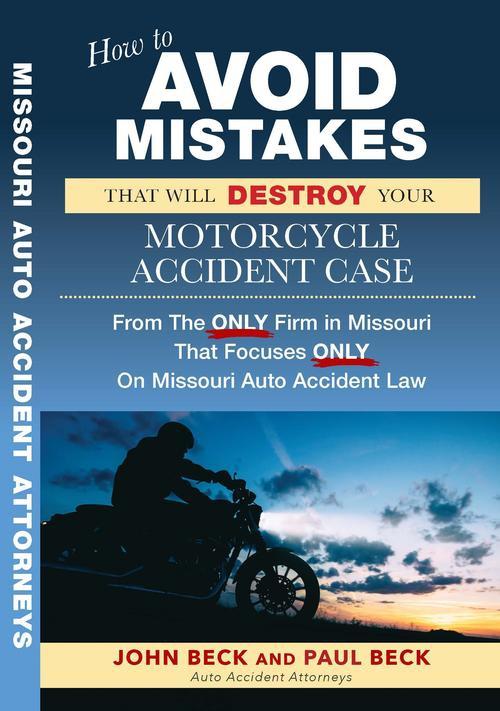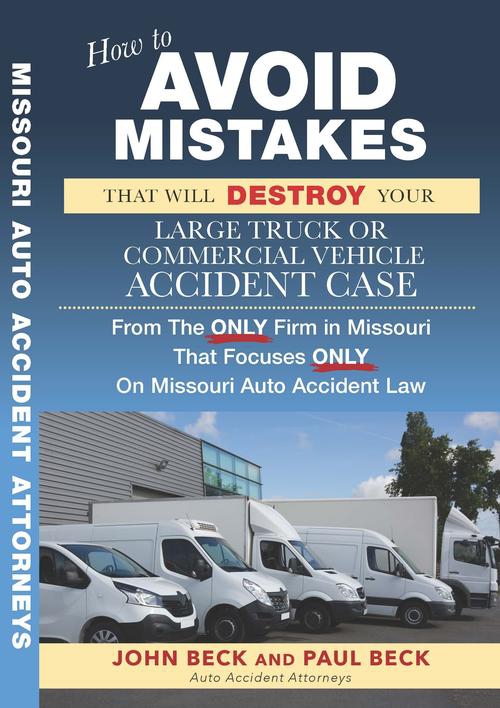Too often, in Missouri, people treat a stop sign like a suggestion—slowing down, glancing around, then rolling through. That split-second decision is how many intersection crashes start. When one driver assumes it’s safe to go and another has the right of way, the result is usually a hard side impact.
These aren’t fender benders. They cause real injuries.
Intersection accidents are among the most dangerous on the road, and unsignalized intersections—those with stop signs or nothing at all—see a large share of them. In 2018, more than 6,700 people were killed in these types of crashes across the U.S., according to the Federal Highway Association’s (FHWA).
Missouri alone saw 132 fatal intersection accidents in 2020. The problem isn’t just the layout of these intersections. It’s that they rely entirely on drivers making the right call, every time.
If you were hit at a stop sign, you may be dealing with more than just a wrecked car. Missouri law gives you the right to pursue compensation for those losses. That includes hospital costs, lost income, property damage, and pain and suffering.
Missouri Stop Sign Laws
Missouri law sets out clear rules for how drivers must behave at stop sign intersections. These rules aren’t just guidelines—they determine who has the right-of-way and who may be held responsible when a crash occurs.
Under RSMo Section 304.351, drivers approaching a stop sign must come to a complete stop and yield to any vehicle already in the intersection. At a four-way stop, the vehicle that arrives first has the right-of-way. If two or more vehicles reach the intersection at the same time, the driver on the right goes first.
The law also requires drivers to yield when entering a road from a private drive, alley, or parking lot, and to proceed only when it’s safe. In practical terms, that means drivers must pay attention not just to the stop sign but to what others are doing around them.
These rules are simple, but in the moments before a crash, they’re often misjudged or ignored. When that happens, the exact details of who stopped, waited, and entered the junction become critical to determining culpability.
Reasons Stop Sign Accidents Happen
Misjudging a Two-Way Stop
One of the most common causes of stop sign accidents in Missouri is confusion at two-way intersections. Many drivers assume that if they have a stop sign, the cross traffic must have one too.
That’s not always the case. A driver may come to a complete stop, look both ways, and see an oncoming car. Believing that car also has to stop, they pull out—only to be struck broadside.
This type of mistake often ends in a T-bone collision—one of the most dangerous types of crashes. Even when a driver comes to a complete stop and believes it’s safe to proceed, misjudging the other vehicle’s speed or assuming it will stop too can lead to devastating results.
Side impacts leave very little protection between the force of the collision and the people inside. Head trauma, broken ribs, and spinal injuries are common—especially when the other driver is moving at full speed and never even touches the brakes.
Failure to Yield or Miscommunication
At four-way stops, timing matters. Drivers who aren’t sure who arrived first may hesitate or proceed at the wrong time. Sometimes, two vehicles try to move through the intersection at once. When one driver fails to yield—or assumes the other will—a crash is likely.
Rear-end collisions also happen often at stop signs, typically when the second vehicle is following too closely. These may seem minor at first, but they frequently result in whiplash and soft tissue injuries.
Rolling Stops, Limited Visibility, and Speed Misjudgments
Not every stop sign violation involves outright running the sign. Many drivers perform a “rolling stop,” slowing down but never coming to a complete halt. At quieter intersections, this behavior is common—and dangerous.
Some crashes also stem from limited visibility. Overgrown trees, poor lighting and parked vehicles can all obstruct a driver’s line of sight. Even if a driver makes a legal stop, pulling into a road where other vehicles are speeding or approaching too quickly can have catastrophic implications.
Distracted or Impaired Drivers
Many stop sign crashes start with a simple lapse in attention. A driver looking at their phone or distracted by something else might miss the sign—or fail to see that the car ahead has already stopped. That’s how rear-end collisions happen, and sometimes it sets off a chain reaction involving multiple vehicles.
Impairment is another common factor. A driver under the influence won’t notice a stop sign as quickly. They react slower, and their judgment is off. At intersections, that can be deadly. Most of these crashes come down to one thing—someone wasn’t paying attention or made the wrong call at the wrong time. And at a stop sign, that’s all it takes.
Proving Fault in Stop Sign Accidents
Stop sign collisions often look simple on the surface, but the legal perspective is more complicated. In many of these cases, both drivers claim they followed the rules. One says they came to a complete stop and entered the intersection legally.
The other insists on the same. When there’s no video footage or neutral witness, it can become a credibility battle—and juries don’t always have enough to go on.
A common complication arises at two-way stops where one road has stop signs and the other doesn’t. If a crash happens in that intersection, the driver on the stop-controlled road may claim they stopped, looked both ways, and believed the cross traffic had to stop too.
But if the other driver had no stop sign and was traveling at or near the speed limit, liability can get murky—especially if there’s disagreement about who entered the intersection first.
Sometimes the damage tells part of the story. A crushed door or front-end impact might show how the cars collided. Skid marks might show someone hit the brakes. But those details don’t always explain who had the right of way—or who made the first mistake.
Without clear evidence or a witness, it can be tough to prove exactly what happened.
These are the kinds of disputes that can derail a claim if not handled correctly. Our award-winning St. Louis car accident attorneys will know how to pressure-test both versions of the story, identify weaknesses in the opposing driver’s account, and bring in expert analysis when needed.
Legal strategy matters most when the facts are unclear and the burden of proof could shift based on one piece of missing or misread evidence.
Experienced Auto Accident Law Firm in Missouri
Stop sign accidents in Missouri can be deceptively complex. Who stopped first, who had the right of way, and how fast each vehicle was going—these details can completely change the outcome of your case. When fault is contested, you need a legal team that knows how to break those details down and build a case the other side can’t ignore.
At Beck & Beck Missouri Car Accident Lawyers, our entire practice is dedicated to car accident cases in Missouri. We’ve handled hundreds of intersection crash claims, including stop sign collisions where liability wasn’t immediately clear.
We know how to uncover the facts, push back when the insurance company tries to minimize your injuries, and make sure the compensation reflects the true cost of what you’ve been through.
You won’t be passed off to a case manager or handed a generic checklist. You won’t be left guessing. We take the time to explain what’s happening, what your rights are, and what to expect. Our focus is on more than just compensation—it’s on helping you get your life back.
For a free consultation, contact us today. We’ve assisted victims of auto accidents for 35+ years in cities including St. Louis, Florissant, Independence, Jefferson City, O’Fallon, Kansas City, Springfield, Joplin, and more.
Related Articles
Cost of the average car accident in the United States
How to find out if someone was in a car accident in Missouri

